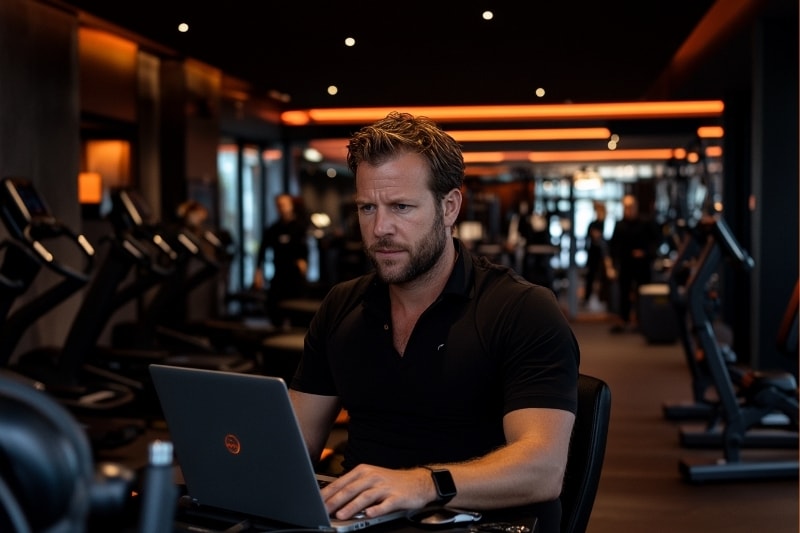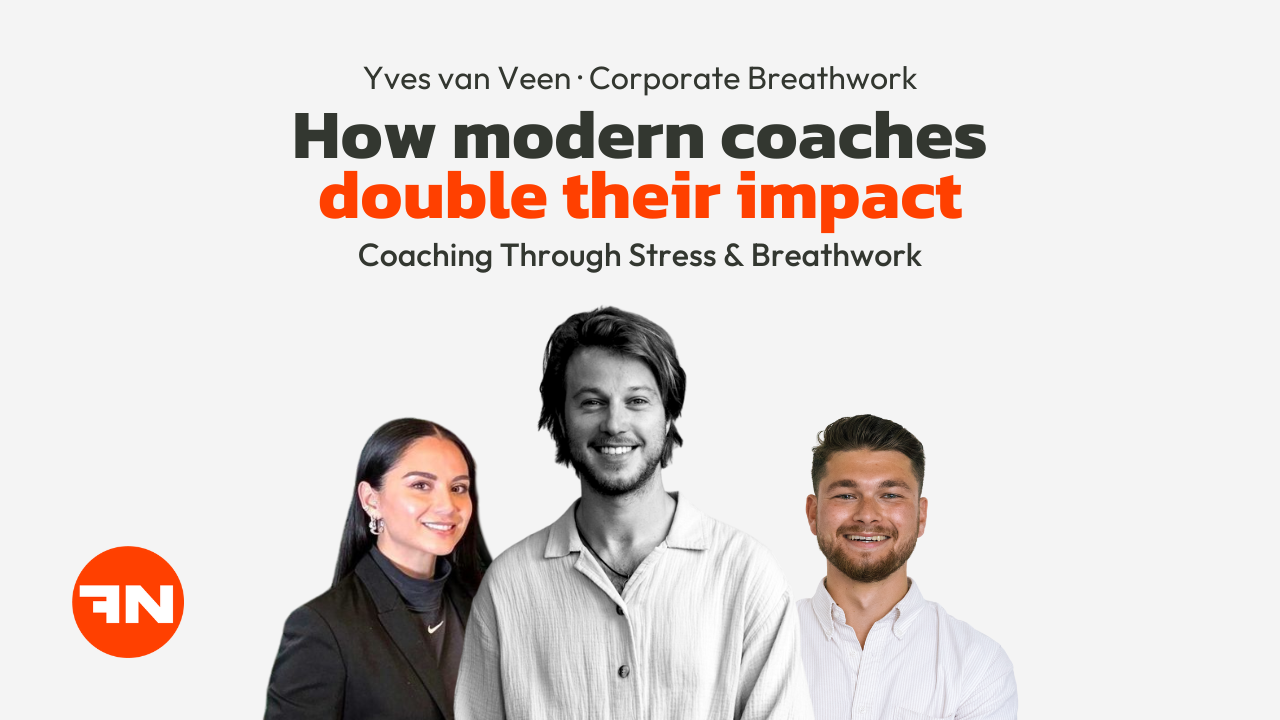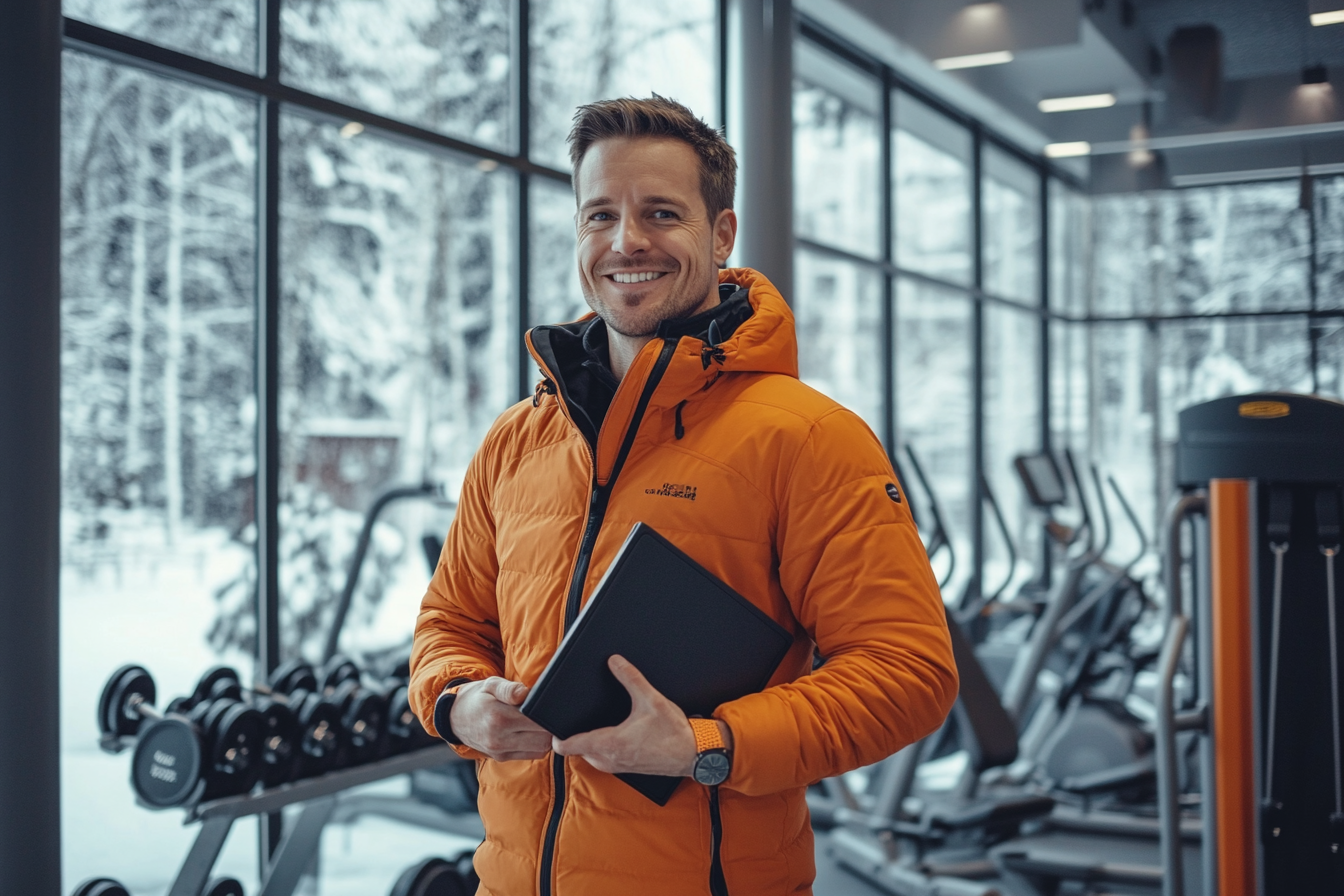When you think of LinkedIn, you probably picture people in suits talking about corporate jobs, right?
But to tell you the truth LinkedIn is a very important tool for fitness professionals too.
Whether you’re a personal trainer, a nutrition coach, or own a fitness studio, LinkedIn gives you the perfect platform to connect with potential fitness clients, showcase your expertise, and build a brand that stands out.
In this guide, I’m going to show you exactly how to use LinkedIn to grow your fitness business, attract the right people, and create opportunities that you might be missing out on right now.
Let’s get started!
Why LinkedIn is a game changer for your Fitness Studio
If you’re still thinking LinkedIn is just a social media platform for corporate suits, know that LinkedIn has over 875 million users globally.
This gives you a lot of opportunity to build your fitness brand.
Let me get into detail as to why you should be using LinkedIn to increase your income potential:
Showcase your expertise
Unlike the quick-scroll nature of Instagram or TikTok, LinkedIn users are here to learn and engage.
60% of LinkedIn’s user base is aged between 25-34 years, making it a prime audience for fitness professionals.
Post in-depth educational content about proper form, share your insights on nutrition trends, or break down complex fitness concepts.
Your followers here are more likely to read, comment, and share substantial content. This is your chance to position yourself as the fitness authority you are.
Connect with High-Value clients
Use LinkedIn’s search features to connect with your ideal clients.
Look for people in your area who hold positions like “CEO,” “Founder,” or “Executive.” When you connect, don’t pitch right away.
Engage with their content, offer value, and build a relationship.
Your next big client could be just a thoughtful comment away.
Remember, these professionals often have extensive networks.
One satisfied client can lead to referrals that could bring in more paying clients and transform your business.
So, treat every connection as a potential gateway to many more.
Take advantage of corporate wellness
Corporate wellness programs are big business, and LinkedIn is where you can get a piece of that pie.
Many companies are looking for fitness professionals to help keep their employees healthy and productive.
This is your opportunity to think bigger than individual clients.
Start by connecting with HR professionals and wellness coordinators.
Share content that speaks to the benefits of corporate fitness programs.
Case studies, ROI statistics, and success stories can be particularly effective here.
Don’t be afraid to pitch your services directly to companies.
You could offer on-site fitness classes, develop custom wellness programs, or even create digital fitness content for your employees.
One corporate contract could be worth dozens of individual clients.
Network like a pro
LinkedIn isn’t just about finding clients; it’s about building your professional network.
LinkedIn’s InMail open rates range from 10%-25%, making it an effective tool for direct outreach.
You can use LinkedIn to connect with other fitness professionals, nutritionists, physiotherapists, and wellness coaches.
Join industry groups and participate in discussions.
This is how you stay on top of industry trends and potentially find collaboration opportunities.
Ever thought about hosting a wellness event or starting a podcast?
Your LinkedIn network could be the key to making it happen.
Maybe you’ll find a co-host, a guest speaker, or even a business partner.
The possibilities are endless when you’re connected to the right people.
How to create an inviting LinkedIn profile
Your LinkedIn profile is more than just a digital resume—it’s your personal brand.
For fitness professionals, it’s the perfect opportunity to connect with potential clients, showcase your expertise, and build meaningful relationships in the industry.
Here’s how to make sure your LinkedIn profile stands out.
Focus on a personal account, not a company page
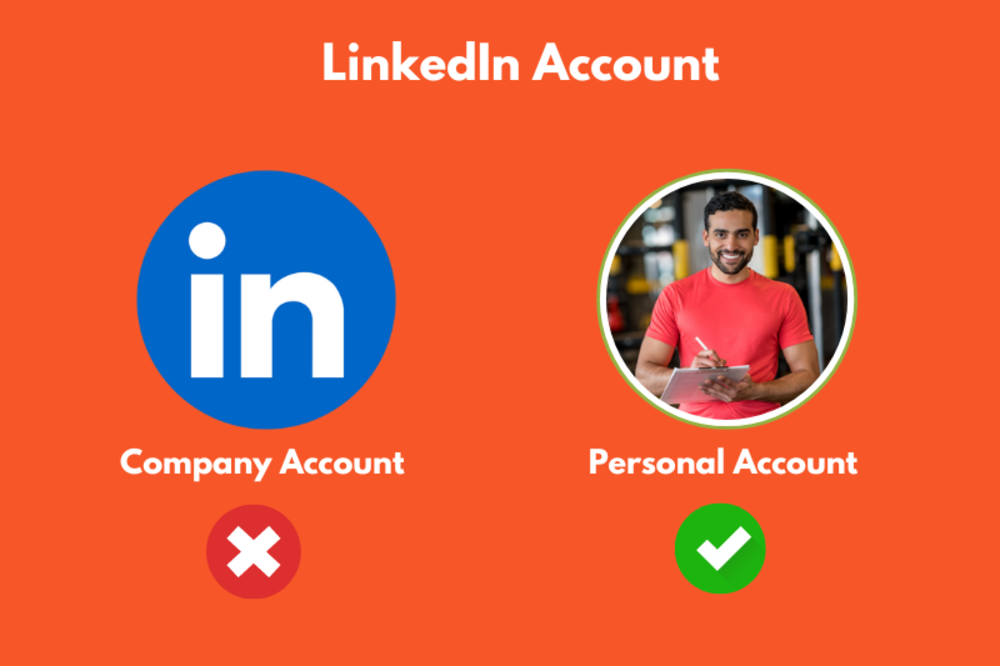
In LinkedIn, personal connections are key, especially in the fitness industry. 💪
People want to connect with you, the person behind the fitness expertise, not just a logo or business page.
A personal LinkedIn account allows you to build authentic relationships by sharing your journey, successes, and passion for fitness.
It’s your chance to showcase your personality, your fitness philosophy, and how you help others achieve their goals.
A company page can be useful, but it won’t have the same personal touch. As a fitness professional, your clients want to get to know you, not just what your business offers.
A headline that stands out
Your headline is like a mini billboard for your profile. It’s the first thing people see, so make it count!
Instead of just listing your job title, focus on how you help people. Think of it as your elevator pitch in one sentence. For example:
- “Helping busy professionals get fit and healthy in [Your City]”
- “Personal Trainer | Transforming lives through fitness and nutrition”
- “Empowering individuals over 40 to live their healthiest lives”
Include your target audience and location if possible.
This helps people instantly understand whether you’re the right fit for their fitness needs.
Profile photo and cover photo: make the right first impression 📸

Your profile photo is one of the most important parts of your LinkedIn profile.
Since you’re in the fitness industry, choose a photo that shows energy, confidence, and approachability.
Think of a photo where you’re in action—maybe at your gym, smiling with a client, or even doing a workout.
You want to look professional but also friendly and approachable.
As for your cover photo, this is an often overlooked area where you can showcase more about your brand.
Consider using a high-energy image from a group class, or even a bold graphic that highlights your unique selling points—whether that’s personal training, nutrition coaching, or specialized fitness programs.
You could even include a call-to-action, such as “Start Your Fitness Journey Today” or “Book a Free Consultation Now.”
Personalize your LinkedIn URL
An easy way to make your profile look more polished is to personalize your LinkedIn URL.
Instead of the default URL with random numbers, make it linkedin.com/in/yourname or linkedin.com/in/yourfitnessbrand.
This small tweak makes your profile easier to find and share, which is essential when networking or promoting your services.
Featured stories on your profile
The Featured section is where you can showcase your best work.
Think of this as your personal portfolio. Include:
- Success stories of client transformations
- Testimonials from happy clients
- Videos of your group classes or personal training sessions
- Articles you’ve written about fitness and health
Highlight your achievements and demonstrate your expertise.
People love to see evidence of success, so make sure this section reflects the best of what you have to offer.
Respond and build relationships
LinkedIn is all about engagement. When someone comments on your posts, respond.
When someone likes your content, thank them.
By taking the time to interact, you’re building connections that go beyond just a digital profile.
And don’t forget about private messages.
Sometimes people feel more comfortable asking questions in private.
Be approachable and responsive in your inbox—it could lead to new clients or valuable professional relationships.
In short, treat LinkedIn like a conversation. Be active, be present, and build those relationships, just like you would with your clients in person.
LinkedIn content strategy for fitness professionals
To truly engage your audience and grow your brand on LinkedIn, a well-thought-out content strategy is crucial.
It’s not just about posting for the sake of it—your content needs to provide value, inspire action, and build meaningful connections.
Here’s how to get started:
Share original content and personal stories
Gone are the days of generic fitness quotes and one-size-fits-all advice. What resonates now is authenticity.
Share personal stories, unique insights, and experiences that make you relatable.
- Talk about client transformations—share the challenges they faced and how you helped them overcome those barriers.
- Open up about your own fitness journey, including struggles and victories. Maybe it’s how you got into fitness or the daily habits that keep you motivated.
- Behind-the-scenes glimpses work wonders. Whether it’s your morning workout routine or the prep work for a group fitness class, showing the human side of your business helps people connect with you.
People appreciate transparency and passion, and this approach makes your content both relatable and engaging.
Fitness is personal, and your stories should reflect that.
Respond to current topics and conversations
LinkedIn thrives on engagement, and one of the best ways to boost yours is by jumping into current discussions.
Is there a trending topic in the fitness world, like a new workout technique or a recent study about the benefits of strength training?
Join the conversation.
Share your thoughts on relevant topics, such as:
- New research connecting nutrition and exercise.
- Trends like wearable tech or functional fitness and how you incorporate them in your training.
- Broader issues like mental health, wellness in the workplace, or even the role of fitness in community building.
By providing your unique take, you’ll show that you’re both knowledgeable and in tune with what’s happening in the industry, helping you attract more fitness clients.
Plus, people are more likely to engage with content they see as relevant and timely.
Structure of your LinkedIn messages
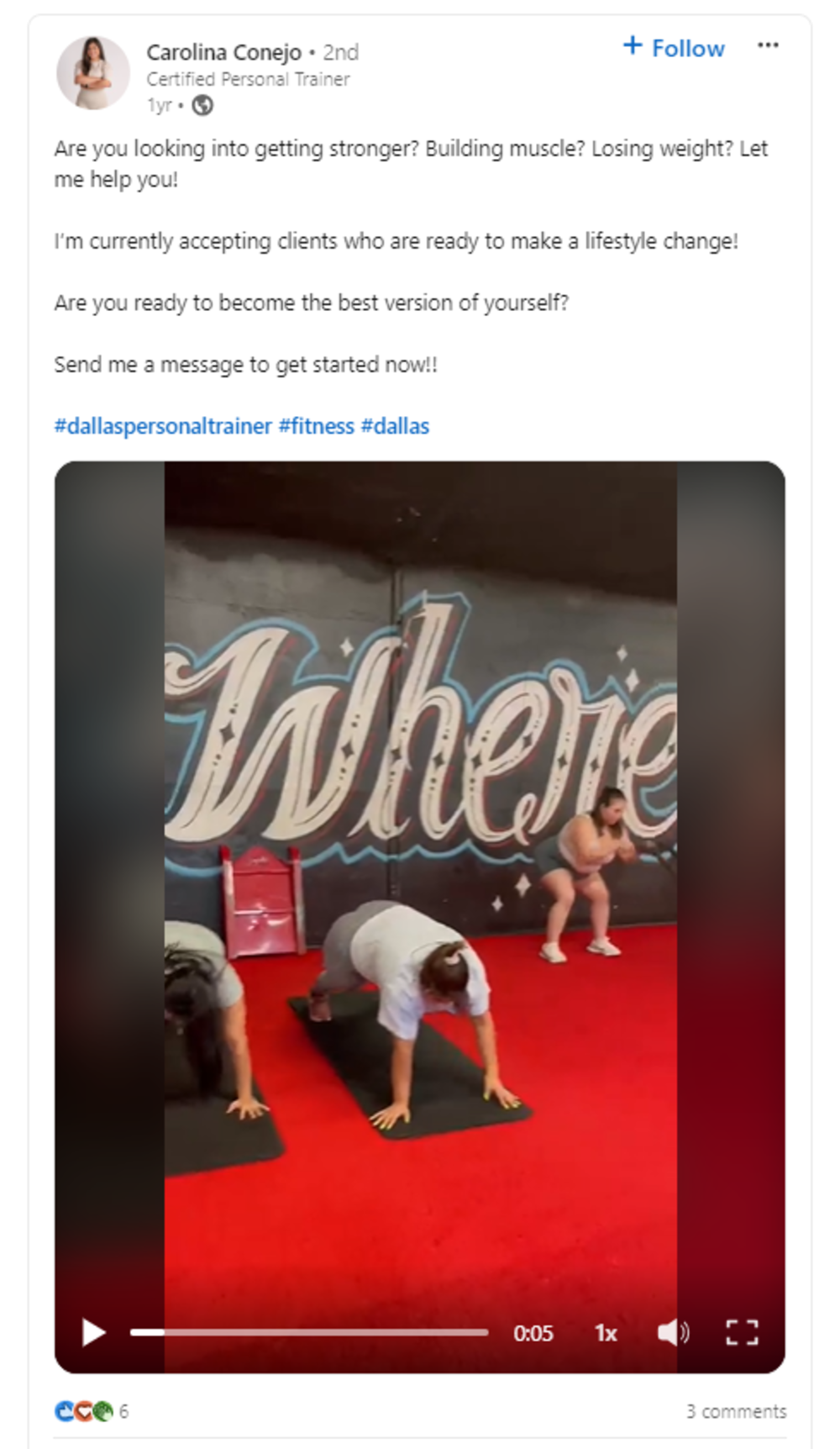
On LinkedIn, attention spans are short.
Your post needs to hook readers from the very first sentence. Here’s how to structure your posts:
- Hook: Start with a question, a bold statement, or a surprising fact. For example: “Struggling to stay consistent with your workouts? Here’s how to fix that.”
- Content: Break down your message into bite-sized, actionable pieces. Use short paragraphs and plenty of white space. Bullet points and numbered lists are great for this.
- Closing: End with a call to action. Ask a question to encourage comments, or invite people to message you for more information.
Some post ideas:
- Fitness Tips: Share a few easy-to-implement fitness tips, like morning routines or workout motivation techniques.
- Success Stories: Highlight a client’s transformation and the steps they took to achieve their goals.
- Behind the Scenes: Offer a glimpse into your daily routine or preparation for a class—this adds a personal touch to your business.
- Insights: Share your thoughts on emerging fitness trends or techniques and ask for your audience’s opinion.
- Promotion (20% of your content): Occasionally promote your services, such as a new group class or an upcoming fitness challenge.
Choose the right type of content

On LinkedIn, visuals are key to grabbing attention. Photos and carousels (which you can upload as PDFs) tend to perform well. Use carousels to share:
- Step-by-step workout guides.
- Client success stories, complete with before-and-after photos.
- A visual breakdown of your top tips for fitness success.
Videos also work, especially if you have something valuable to share.
While videos may not go viral on
LinkedIn, the way they might on other social media platforms, has high-quality, informative videos that can still leave a strong impression.
LinkedIn post dimensions
To ensure your visuals look great, use the correct dimensions:
- Square images: 1200 x 1200 pixels.
- Portrait images: 1080 x 1350 pixels.
- Blog post links: 1200 x 627 pixels.
Links to your website
If you’re driving traffic to your website, be strategic.
LinkedIn tends to limit the reach of posts with external links, so the link should be placed in the comments instead of the post itself.
Write something like, “Check out the first comment for the link!” This small adjustment can significantly boost your post’s visibility.
The best rime to post on LinkedIn
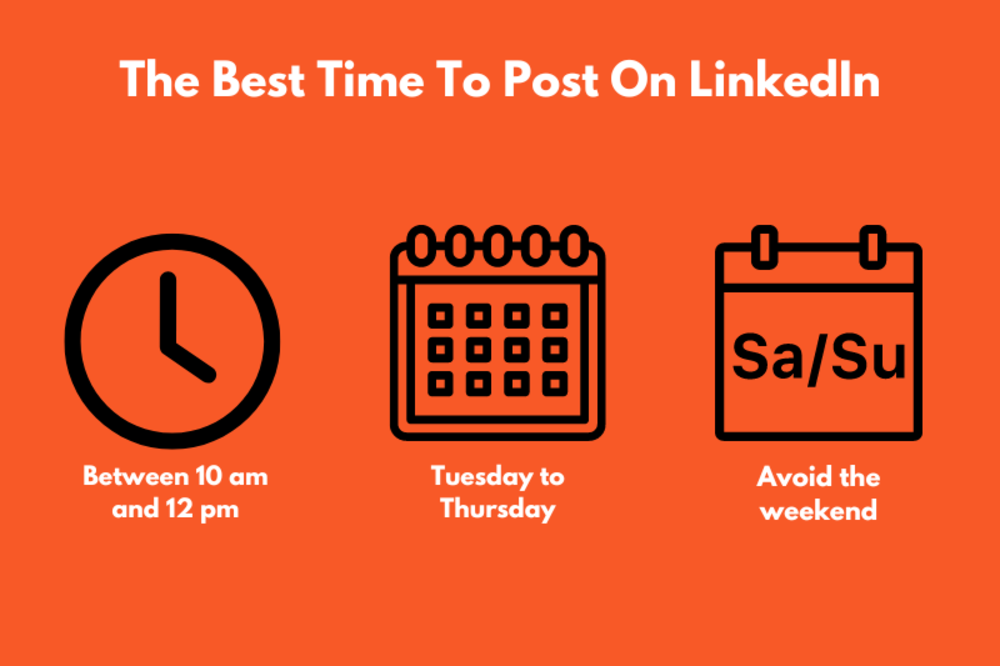
You want your posts to reach as many people as possible, and that means posting when your audience is most active.
According to Sproutsocial, the ideal time to post is between 10 a.m. and 12 p.m. on weekdays, especially between Tuesdays, Wednesdays, and Thursdays.
These are the days when professionals are actively engaging with content, networking, and looking for inspiration.
Avoid the weekend.
Saturdays and Sundays are typically the worst days to post because most people are offline, focusing on personal time rather than business or professional development.
By posting at the right time, you increase your chances of getting more eyes on your content, leading to higher engagement and more connections with potential clients.
Use keywords and hashtags on LinkedIn
Want your posts to stand out and be easily discoverable? Keywords and hashtags are your best friends.
LinkedIn’s algorithm thrives on specific, targeted terms that align with the interests of your audience.
So, if your content is focused on fitness topics like “HIIT,” “weight loss,” or “hypertrophy,” make sure to naturally incorporate these keywords into your post.
This helps the algorithm understand what your post is about and who would find it valuable.
Plus, it improves your post’s visibility to people searching for those terms.
Local hashtags
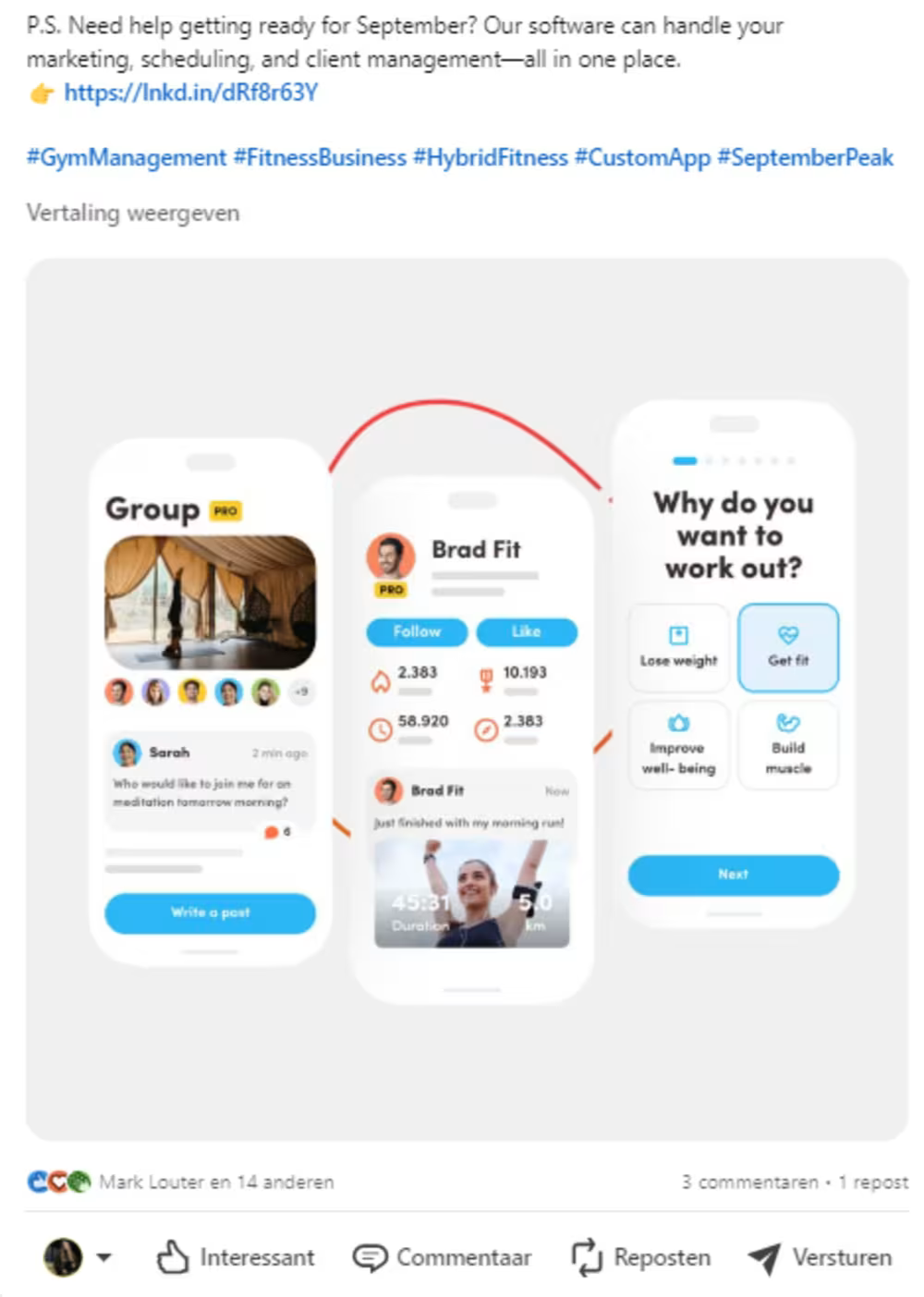
For fitness professionals, local visibility is crucial. People want to connect with local businesses and services, even if they’re not directly searching for a gym on LinkedIn.
Using local hashtags like:
- #{City}
- #zumbaclass{City}
- #personaltrainerin{City}
- #fitnessstudioin{City}
will help you reach people in your area faster. It immediately signals that you’re a local fitness professional, making it easier for potential clients to find and connect with you.
But don’t go overboard with hashtags. Stick to three relevant hashtags per post to keep your content focused and avoid cluttering your message.
Use smart tools for LinkedIn
Using LinkedIn effectively doesn’t mean you have to handle everything manually.
There are smart tools available that can save you time and help you get the most out of your presence on the platform.
- AuthoredUp: This tool is great for crafting polished LinkedIn posts. You can easily format your text with bold fonts, bullet points, and emojis to make your content stand out.
- Scheduling Tools: LinkedIn now offers its own scheduling feature, allowing you to post at times when your audience is most active. Tools like Buffer or Hootsuite also work well for planning your content ahead.
- ChatGPT: Use it to brainstorm content ideas or refine your posts. Just remember to personalize the output so it reflects your unique style.
Automation tools can also help with lead generation and managing posts, but be cautious. LinkedIn can be strict with third-party tools, so always use them responsibly to avoid penalties.
Networking via LinkedIn for fitness professionals
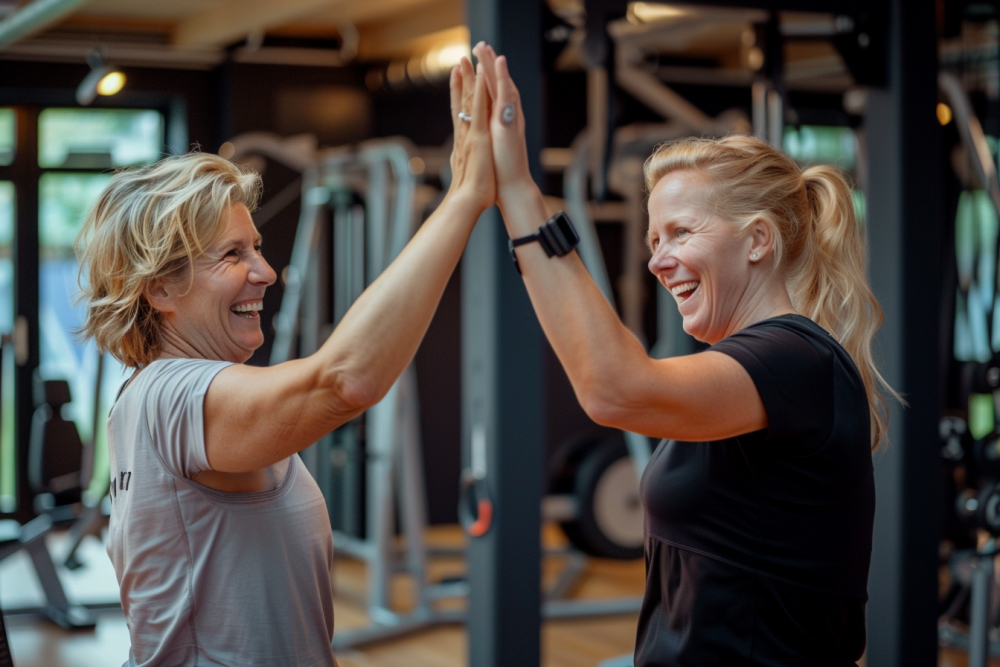
Networking on LinkedIn is more than just adding connections—it’s about building relationships that can advance your career or grow your fitness business.
Whether you’re a personal trainer, a gym owner, or a fitness coach, LinkedIn offers a unique space to connect with key players in your industry.
Here are four powerful ways you can network to boost your fitness career:
Collaborations with healthcare professionals
A valuable avenue for networking is connecting with local healthcare professionals like physiotherapists, doctors, and nutritionists.
These experts work with clients who often need additional fitness support, whether it’s for rehab, weight management, or general health improvement.
By creating a strong network with healthcare providers, you can position yourself as a holistic fitness expert, offering services that complement their treatments.
This also opens the door for referrals, helping you grow your client base with people who genuinely need your expertise.
Collaborate with local businesses and entrepreneurs
LinkedIn is full of opportunities to connect with local businesses and entrepreneurs.
Establishing relationships with them can lead to exciting partnerships, such as corporate wellness programs, employee fitness challenges, or even joint marketing campaigns.
Many companies are looking for ways to improve their team’s well-being, and this is where you can step in. Offer discounted memberships or fitness classes to businesses in your area.
It’s a win-win: they get healthier employees, and you increase your gym’s membership.
This type of networking shows that you’re invested in the well-being of your community, which can also lead to new business opportunities.
Networking with the municipality
Don’t overlook the value of connecting with local government and municipal organizations.
Networking with local authorities can unlock access to public health initiatives, sponsorship opportunities, and community event collaborations.
For example, participating in local health fairs, wellness initiatives, or city-sponsored fitness programs can provide excellent exposure for your gym or fitness services.
These connections enhance your reputation and solidify your role as a key player in community health.
Participate in industry-specific groups
LinkedIn is full of fitness-related groups where professionals like gym owners, personal trainers, and fitness entrepreneurs gather to share ideas, tips, and industry insights.
By actively engaging in these groups, you’ll stay on top of current trends, discover new strategies, and find opportunities for collaboration.
Whether it’s discussing challenges, co-hosting fitness events, or simply swapping best practices, these groups offer a platform to expand your network and learn from others in the fitness industry.
Plus, it’s a great way to showcase your expertise and attract new connections.
Conclusion
All right, you’ve got everything you need to crush it on LinkedIn as a fitness professional.
From setting up a killer profile that showcases your expertise, to building connections and sharing valuable content that gets people’s attention—you’re ready to take your LinkedIn game to the next level.
Remember, the key is consistency and showing up as the expert that you are. Don’t be afraid to engage, offer advice, and connect with others in the industry.
With time and effort, you’ll grow your network, attract more clients, and build a strong online presence on LinkedIn.
